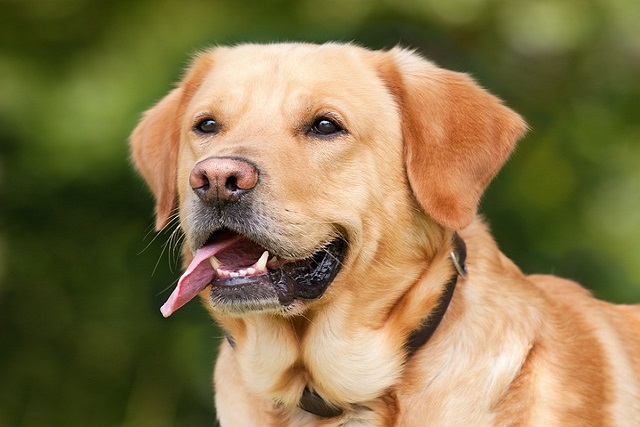
What is glaucoma in a dog?
You might notice your dog squinting more at mealtime or avoiding bright sunlight—these small changes could be early signs of a serious eye condition.
When the sunlight shines through the window and into the warm living room, our beloved dog runs towards us joyfully, its nose twitching and sniffing the breath of life. The nasal cavity of dogs is not only an important organ for them to perceive the world, but also plays a crucial role in their health. A healthy nasal cavity allows dogs to breathe smoothly and capture various odors sensitively. However, dogs are lively and active, and when playing, dust, pollen, and foreign objects can easily enter their nasal cavities, causing discomfort and affecting their health. Seeing a dog constantly sneezing and scratching its nose due to nasal discomfort, we feel heartbroken. With care and professional knowledge for dogs, let's explore what can be used to clean their nasal cavities.
Physiological saline is an ideal choice for cleaning the nasal cavity of dogs. Its osmotic pressure is similar to the fluid in dogs' bodies, and it does not irritate the nasal mucosa, making it highly safe. Physiological saline can effectively flush away dust, dirt, and secretions from the nasal cavity, reduce bacterial growth, and prevent respiratory infections. Physiological saline can be easily purchased at pet stores or pharmacies. When using, gently hold the dog in your arms and soothe it with a gentle tone to help it relax. Use a dropper or spray bottle to absorb a proper amount of physiological saline, aim the dropper or nozzle at the dog's nostrils, gently squeeze, and let the physiological saline slowly flow into the nasal cavity. Dogs may experience slight discomfort due to sudden fluid entering their nasal cavity. We should stroke them in a timely manner to provide comfort. After rinsing, dogs usually sneeze to expel foreign objects and saline from their nasal cavity.
In addition to physiological saline, distilled water can also be used to clean the nasal cavity of dogs. Distilled water undergoes distillation treatment to remove impurities and bacteria, making it relatively pure and less irritating to dogs' nasal cavities. When preparing distilled water, make sure its temperature is appropriate, close to the dog's body temperature, and avoid stimulating the nasal cavity with too cold or too hot water. The use method is similar to that of normal saline. Use a dropper or spray bottle to slowly drip or spray distilled water into the nasal cavity of dogs. However, distilled water lacks the bactericidal effect of physiological saline and has a relatively weak cleaning effect.
There are also nasal care fluids specifically designed for pets on the market. These care solutions contain mild antibacterial and anti-inflammatory ingredients, which not only clean the nasal cavity but also protect the nasal mucosa and alleviate nasal inflammation. When choosing a pet specific nasal care solution, it is important to choose a reputable brand and check the product ingredient list to ensure its safety and reliability. According to the instructions in the product manual, use care solution to clean the dog's nasal cavity.

When cleaning a dog's nasal cavity, it is important to choose appropriate tools. Droplets can accurately control the flow and direction of liquids, avoiding excessive liquid from entering the nasal cavity and causing discomfort in dogs. The spray bottle can evenly spray the liquid in the nasal cavity, and the cleaning range is wider. Regardless of which tool is used, it is important to ensure its cleanliness and hygiene to avoid cross infection.
During the cleaning process, the dog's reaction is crucial. If the dog shows strong resistance, do not forcefully rinse it, but stop and patiently comfort it, allowing the dog to gradually adapt. Each dog has a different level of sensitivity, and we need to adjust the intensity and frequency of flushing according to the dog's reaction. After cleaning, gently wipe the dog's nose with a soft towel to keep the area around the nose clean and dry.
Regularly cleaning a dog's nasal cavity can make their breathing smoother and reduce the occurrence of respiratory diseases. Seeing our dog's nose remain healthy and full of vitality under our careful care, our hearts are filled with satisfaction. Dogs bring endless joy to our lives with their companionship. As their guardians, we should use love and professional knowledge to pay attention to the health of dogs, create a healthy and comfortable living environment for them, and write warm and touching stories between humans and dogs.

You might notice your dog squinting more at mealtime or avoiding bright sunlight—these small changes could be early signs of a serious eye condition.

Let’s set the scene: It’s a sweltering Phoenix afternoon—105°F outside—and you rushed your 2-year-old Lab mix, Cooper, on a quick walk to “get it over with.”

Let’s get real: You’re in your Miami apartment, watching your 3-year-old Corgi, Loki, struggle to climb the stairs to your second-floor unit.

Many dog owners brush off occasional scratching as just “dog behavior,” but persistent itching often signals something more—like a food allergy.

You might first notice your dog scratching more than usual—chewing at their paws until the fur looks thin, or rubbing their face against the couch nonstop.

Let’s be real: You’re standing in your Chicago apartment, watching your 3-year-old Beagle, Max, huff and puff just to climb onto the couch.